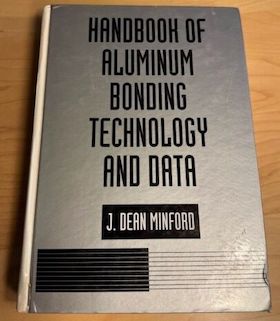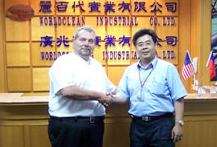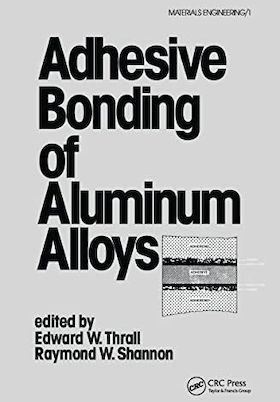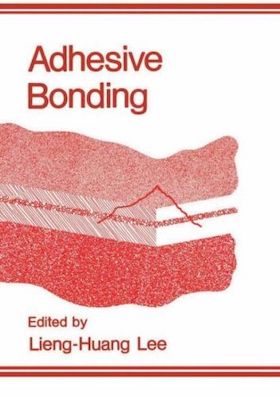
Curated with aloha by
Ted Mooney, P.E. RET

The authoritative public forum
for Metal Finishing 1989-2025

-----
Weak adhesion to Aluminum after Chromate Conversion Coating
Quickstart (no readers left behind):
Aluminum is often 'chromate conversion coated' as a corrosion resistant final finish or as a pretreatment for painting or powder coating. The process actually involves many steps, usually including alkaline cleaning, etching, deox/desmut, the chromate conversion step per se, and water rinses between each step.
MIL-C-5541 / MIL-DTL-5541 / MIL PRF-5541 is the most commonly cited spec. "Alodine" and "Iridite" are proprietary trade names from two suppliers of the process chemistry. "Chem film" is a slang term for the process often used in the USA.
Q. For architectural aluminum coating, a chromate conversion is part of the pre-treatment.
I want to understand how long does this chemical conversion coating stay intact? What would be the last hour before it becomes important to powder/paint coat the material or when does it become necessary to redo the chromate conversion coating?
Sometimes, a part where the glass and aluminum will bond in an architectural profile, is kept uncoated/masked. What role does the chromate conversion play here, does it help in the bonding, or does it just fade away?
General Manager - India
December 1, 2024
A. Hi Rachith.
Although nothing lasts forever, chromate conversion coating is a permanent coating not a temporary one. It can be used as a base under paint or powder coating, but it can also be a free-standing final finish as well.
I don't think there is a last hour before paint/powder ... I think that's just a matter of not waiting for days because the chromate will get dirty and dusty. I presume that the chromate gel will eventually become dessicated after some number of weeks, months, or years, so you would want to paint within a reasonable time frame, not months later.
Chromate conversion coating is an excellent anti-corrosion coating so you'd probably want to apply it before painting anyway, but paint does stick to the conversion coating better than to raw aluminum, although the chemistry and topography of exactly why is beyond my pay grade.
Luck & Regards,

Ted Mooney, P.E. RET
Striving to live Aloha
finishing.com - Pine Beach, New Jersey
⇩ Related postings, oldest first ⇩
References/Information on P2 Etch Process & Alodine
Q. I am new to the aluminum finishing business and could use some technical information on the P2Etch Process and the Chemical Conversion Coating process (Alodining). Also would like to network with other folks concerning chemical suppliers, equipment, techniques, problem-solving.
TomaszewskiManufacturing - Cadillac, Michigan, USA
1999
A. Hi Tomaszewski ,
I suggest that you contact , Mr Dave Hunt of Stone Chemical, Naperville , Illinois and use my name as a means of introduction . You will find Dave a very knowledgeable fellow who networks very well. best regards John . C . Tenison - Woods

John Tenison - Woods
- Victoria Australia
A. I'm not familiar with the P2 etch myself, but chromate conversion coating of aluminum is covered in specification MIL-C-5541.

Ted Mooney, P.E.
Striving to live Aloha
finishing.com - Pine Beach, New Jersey
A. The P2-etch process was developed and patented by Picatinny Arsenal as an alternative to the FPL etch for adhesive bonding to aluminum alloys. Sulfuric Acid, conc (sp. gr. 1.84) 370 g Ferric sulphate, 75% 150 g Dilute to 1 liter with deionized water Temperature 150 °F Time 12 min
Bill Park- Palo Alto, California
A. The P2 etch solution is described in ASTM=D2651.html"Standard Guide for Preparation of Metal Surfaces for Adhesive Bonding".
Ward Barcafer, CEFaerospace - Wichita, Kansas
A. The original Alodine is a process that been invented some 70 years ago. The original company for it is Henkel Surface Technology.

Yehuda Blau
YB Plating Engineering and Quality - Haifa Israel
Multiple threads merged: please forgive chronology errors and repetition 🙂
Adhesive Use on Conversion Coated Aluminum Surfaces
Q. The Handbook of Aluminum and Aluminum Alloys states that, "Because of their low strength, conversion coatings should not be used on surfaces to which adhesives will be applied". Is there any information that supports or contradicts this statement? We have gone through extensive testing of 3M TS-230 Hot Melt on an Alodined aluminum surface and have seen no problems. I would like to be able to proceed based on our testing, but I don't want to violate proven industry practices. Is bonding to Alodined aluminum acceptable?
Jeff Groce- Dallas,Texas
1999
A. At one of the companies I worked for, we applied an adhesive primer to a chem-filmed, (chromated) 1100 alloy 5 mil thick aluminum foil surface. We qualified the foils by lap shear testing at cold, ambient and elevated temperatures. The results were as good as FPL etched, adhesive primed lap shear coupons which were bonded as controls.
Ward Barcafer, CEFaerospace - Wichita, Kansas
A. Dear Jeff Your statement show that DO NOT BELIEVE EVERY BOOK, especially books in surface finishing. The developments and innovation in this area is so fast that from the beginning time of writing the book to the end of period there are changes . This what is making our occupation so fascinating and interesting. You are doing the same as thousands of factories are doing and give step elevation to the quality of your products . Yours

Yehuda Blau
YB Plating Engineering and Quality - Haifa Israel
A. It sounds like we're all saying, "if it works, don't try to fix it." We recently had a "think outside the box" training program in our R & D Dept., where we essentially learned not to assume that many of those "cast in stone" rules can't be broken. One thing I like about this business is that most successful finishers use very little exact "cast in stone" science and a lot of logic and common sense. Considering that there are probably a zillion types of adhesives out there with varying amounts of adhesive strength from Post-its to holding rocket parts together in outer space, making a blanket statement like the one in the handbook is naive and close-minded on the part of whoever made it. The statement may be true for some very high strength adhesives where anodize may be superior over conversion coating, but conversion coatings should work with many adhesives.
As long as your successful tests are representative of the actual real-life application of the product, then you've proven that it works, so why not go for it?

Phil Johnson
- Madison Heights, Michigan
Aluminum bonding for high temperatures
Q. I am looking for an adhesive to bond aluminum to aluminum, that will with stand average pressure, temperatures over 350 °F and will not be effected by automotive oils.
John Briner- Clarksburg, ON, Canada
2002
A. You might want to look at a new process developed by The Welding Institute in England, friction stir welding. If your geometry isn't too complex, and you can find someone who can do it for you (it is new), it provides a welded junction without any heat distortion of the parts. There was an article on it in Advanced Materials and Processes early last year. There will be some presentations on the technology at this year's Aeromat meeting.

Jim Treglio - scwineryreview.com
PVD Consultant & Wine Lover
San Diego, California
1842A Aluminum finish?
Q. Can anyone please guide me to find more details of 1842A chemical coating on aluminum?
My problem is that I am trying to verify a part that is supposed to have 1842A coating on aluminum part. So far, I have not been able to establish the details of this coating.
Regards,
by J. D. Minford

on eBay or
AbeBooks
or Amazon
(affil links)
-Calgary, Alberta, Canada
2003
A. It could be an SAE standard (recommended practice): SAE Standards. Document Number: ARP1842 Date Published: July 1984 Title: Surface Preparation for Structural Adhesive Bonding, Aluminum Alloy and Low Alloy Steel Parts. This recommended practice describes the materials and procedures for cleaning aluminum allow detail parts and low-alloy steel parts (other than corrosion resistant steel) prior to structural adhesive bonding operations. The surface treatments described here have proven effective for producing a suitable surface for application of adhesive primers, films, or pastes prior to structural adhesive bonding operations. https://www.sae.org/servlets/productDetail?PROD_TYP=STD&PROD_CD=ARP1842
Ken Vlach [deceased]- Goleta, California
Rest in peace, Ken. Thank you for your hard work which the finishing world, and we at finishing.com, continue to benefit from.
Q. We need to paste brake lining on aluminum body after Chromating the aluminum body. We are using Araldite 64 as glue. Adhesion is good and qualifies to the standard if done without Chromating the aluminum body. But after Alodine treatment adhesion is not good and lining comes out with about 50% force than Standard necessary before pasting.
Abdul Rehman Aizaz- Karachi, Pakistan
January 3, 2022
A. Hi Abdul. Chromate coatings are subject to dehydration if dried at too high a temperature or subjected to other operations which might disturb them before the 24-hour cure time. They are also subject to shearing, especially if too heavy.
Many people are doing it, but even still, chromate conversion coating might not be the best/only aluminum treatment before adhesive bonding. Your inquiry is attached to several others on this general subject, and you might or might not find a different process such as phosphoric acid anodizing for adhesive bonding to be better suited to the application :-)
Luck & Regards,

Ted Mooney, P.E. RET
Striving to live Aloha
finishing.com - Pine Beach, New Jersey
A. Alodine should help adhesion if applied properly, so you should look at how you apply the chem film. Do not heat over 140 °F or put it on very heavily. Heating over 140-160 °F will dry the film out and destroy adhesion. Putting on a very heavy dark film will also destroy adhesion. Just as a note a trivalent material will be less susceptible to drying out and should handle higher temperatures. Hope this helps

Drew Nosti, CEF
Anodize USA
Ladson, South Carolina

Q, A, or Comment on THIS thread -or- Start a NEW Thread

